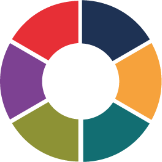You know that happy employees make your company better in myriad ways, but is it possible to sustain that culture? Here are some expert tips to help.
Jenn Lim, the Co-Founder and CEO of Delivering Happiness, is an advocate for thinking and working differently. She extols the virtues of creating a positive team culture – with happy employees and a joint purpose – to boost the company’s profitability. In an article on work culture, Lim writes: “Innovators of today’s workplaces get it. To attract, retain and engage the people that make the biggest contribution to your company, culture is king.”
Whilst the notion of culture (and climate) has risen in awareness amongst execs, it is a hard one to get right long term. All too often, companies invest in initiatives like weekly massages, Friday drinks or the relaxation area and think that they’ve ticked the box for a positive culture. To sustain a healthy team climate, you need to go beyond that.
Lim’s answer is to implement:
- Strong values that employees embrace
- Using data to maximise performance at both an individual and team level
- Adopting an inspirational ‘higher purpose.’
Ensuring that these factors are implemented well and that staff are aligned with them is vital. How do you know? Staff engagement surveys can go some way to finding answers. The PCS diagnostic tool goes even further and will highlight the areas in which leaders and employees are aligned and those that need work. It can show exactly where to direct energy and resources, to boost happiness and improve the team climate. As Lim explains: “happier people in the workplace amount to increased retention, sales, productivity, creativity and – ultimately – profits.”
Defining the company values and communicating that throughout the business is a key factor too. Be they conventional or distinct yet pertinent to your organisation, strong values that your people can live by make a big contribution to the climate in your workplace.
This is not an exercise to just implement and forget though. Once you’ve worked on the happiness factor, the team climate and productivity, you can’t afford to rest on your laurels. We recommend quarterly reviews of your teams to test the culture, to identify areas that need to be developed and to confirm those that are improving or work well. Or as Lim puts it so succinctly, ‘rinse, wash, repeat.’


